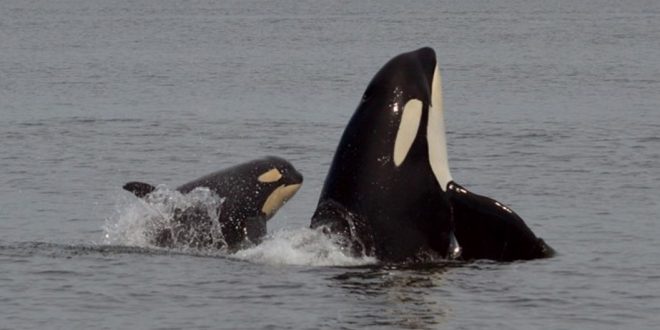The Pacific Whale Watch Association today released the latest series of photos taken of some of the newest additions to the Southern Resident Community of orcas.
Following the death of several whales in 2014 there was a substantial concern for extinction. In fact, the species were previously petitioned to be listed under the U.S. Endangered Species Act.
“Every time we had a baby born to this population last year, people got giddy,” remembers Michael Harris, Executive Director of PWWA, representing 38 companies operating out of 21 ports in BC and Washington. “And awesome as the news always was, I guess we sometimes had to be a buzzkill. We had to remind everyone that wild orcas have a 50% mortality rate out there, that half of these babies don’t make it through their first year. It’s a coin flip, we said. Well, now we can breathe a little easier. . .”
The Center for Whale Research now estimates up to nine babies could be produced by the population each year, but with a high rate of neonatal and prenatal mortality the annual average has been three.
These calves were born in 2015:
J51 or “Nova” is first seen on February 15th — mother is J41 or “Eclipse.”
L121 or “Windsong” is first seen mid-February – mother is L94 or “Calypso.”
J52 or “Sonic” is first seen March 30th – mother is J36 or “Alki.”
L122 or “Magic” is first seen September 4th or 5th – mother is L91 or “Muncher.”
J53 or “Kiki” (short for Kikisoblu) is first seen on October 24th – mother is J17 or “Princess Angeline.”
L123 or “Lazuli” is first seen in early November 2015 and confirmed in December 2016 – mother is L103 or “Lapis.”
J54 or “Dipper” is first seen December 1st – mother is J28 or “Polaris.”
Agencies/Canadajournal
 Canada Journal – News of the World Articles and videos to bring you the biggest Canadian news stories from across the country every day
Canada Journal – News of the World Articles and videos to bring you the biggest Canadian news stories from across the country every day



